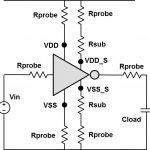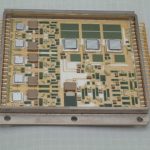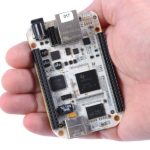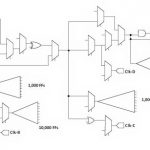The 8051 microcontroller has been around for years…decades in fact. It was originally developed in 1980 by Intel. Back then it required 12 clock cycles per instruction but modern cores use just one. While it is still widely used, mostly as an IP core for SoCs, it is running out of steam despite running over 50 times faster than… Read More
Tag: microcontroller
Intel Quark awakening from stasis on a yet-to-be-named planet
We know the science fiction plot device from its numerous uses: in order to survive a journey of bazillions of miles across galaxies into the unknown future, astronauts are placed into cryogenic stasis. Literally frozen in time, the idea is they exit a lengthy suspension without aging, ready to go to work immediately on revival … Read More
Dual Advantage of Intelligent Power Integrity Analysis
Often it is considered safer to be pessimistic in estimating IR-drop to maintain power integrity of semiconductor designs; however that leads to the use of extra buffering and routing resources which may not be necessary. In modern high speed, high density SoCs having multiple blocks, memories, analog IPs with different functionalities… Read More
Here to make my stand, with a chipset in my hand
Yesterday, I clicked “like” on a LinkedIn post with the title “TI Cuts 1,700 Jobs”. Today, I read the analysis and pulled out Social Distortion’s “Still Alive” for inspiration. I’ve been through this more than once. For them it’s not like-worthy, and I feel their sting.
The part of the post I liked was the comment: “This is good for … Read More
Hybrids on BeO then, 3D-IC in silicon now
Once upon a time (since every good story begins that way), I worked on 10kg, 70 mm diameter things that leapt out of tubes and chased after airplanes and helicopters. The electronics for these things were fairly marvelous, in the days when surface mount technology was in its infancy and having reliability problems in some situations.… Read More
The Middle is A Bad Place to Be if You’re a CPU Board
In a discussion with one of my PR network recently, I found myself thinking out loud that if the merchant SoC market is getting squeezed hard, that validates something I’ve been thinking – the merchant CPU board market is dying from the middle out.… Read More
40 Billion Smaller Things On The Clock
Big processors get all the love, it seems. It’s natural, since they are highly complex beasts and need a lot of care and feeding in the EDA and fab cycle. But the law of large numbers is starting to shift energy in the direction of optimizing microcontrollers.
I mulled the math in my head for a while. In a world with 7 billion people and … Read More
AMS Programmable Prototype Platforms
AVNET released their 15[SUP]th[/SUP] Xfest this year, a couple of months ago. It was here in Germany last week. It was a well organized event, rich with invaluable technical information and full of decent smart engineers and managers. If you missed it this year register for the next event as soon as you can.
It was a very successful… Read More
Will the last 8051 please turn out the lights?
The words no engineer or supply chain professional wants to hear: end-of-life. It’s a reality of the semiconductor business, however – even the cheapest parts reach the point, eventually, where producing and selling them becomes inefficient. Is it reasonable that a microcontroller architecture outlive the people… Read More








